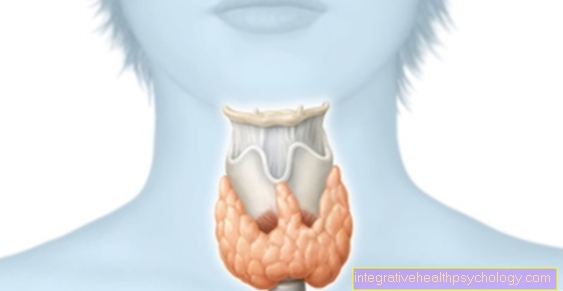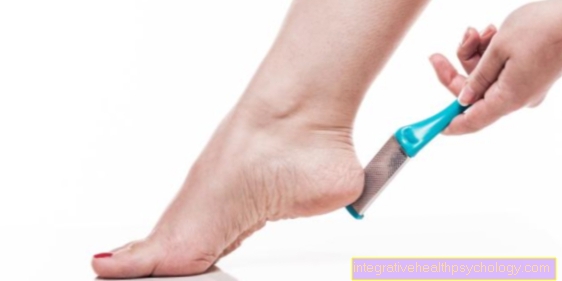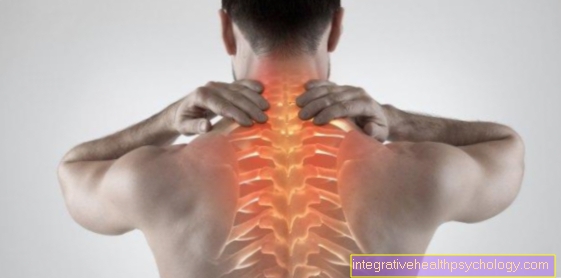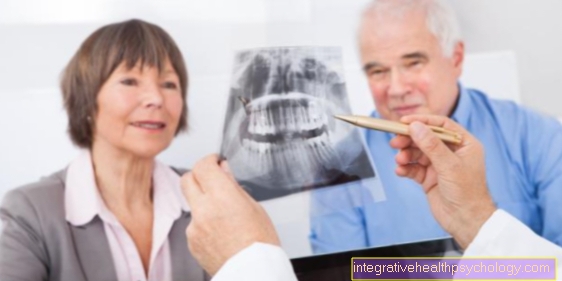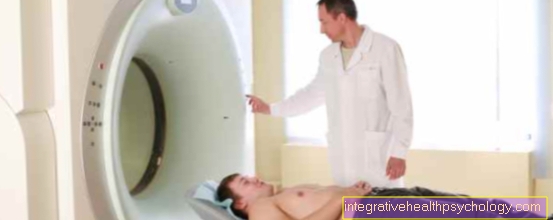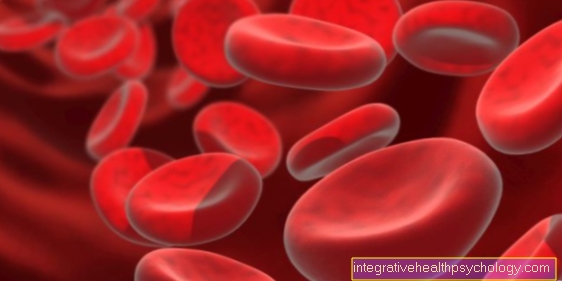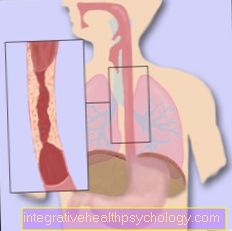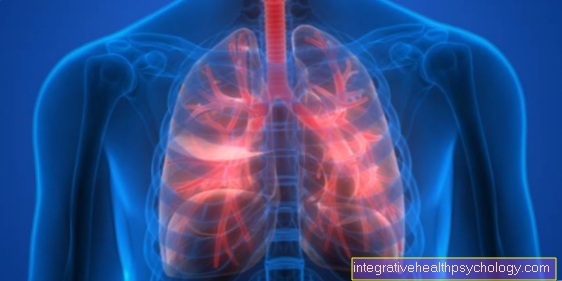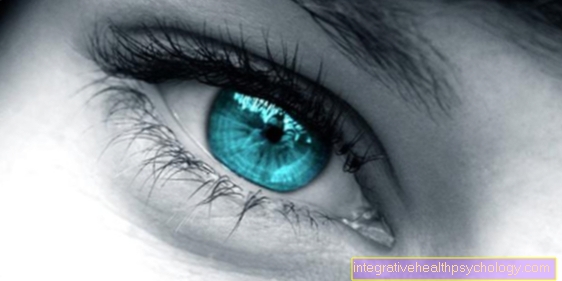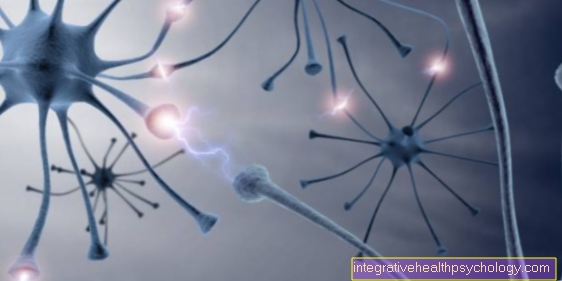Procaine syringe
definition
Procaine is a local anesthetic and can therefore be used for local pain relief. Procaine is one of the oldest known narcotics and was used as an anesthetic for amputations as early as the beginning of the 20th century.
Today procaine is used for local anesthesia, especially in dentistry. Procaine syringes are usually placed just under the skin by doctors. Injection into blood vessels is not permitted as it can lead to serious complications.
Read more on the subject below: Procaine
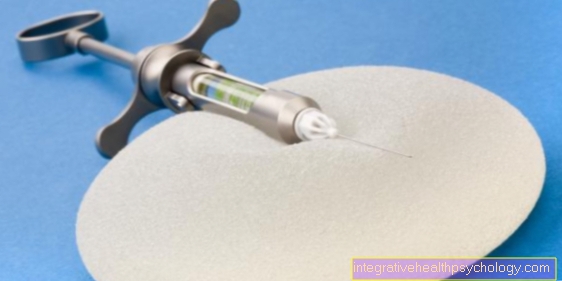
Indications
Procaine is a local anesthetic for local pain relief. A common place of application for procaine is dentistry. In many procedures, such as tooth extractions and root treatments, the nerve that supplies the teeth can be switched off with procaine.
In the lower jaw, a single injection is sufficient at the point where the nerve is located Mandibularis leaves the bone. In the upper jaw, injections are necessary at several points around the branches of the nerve Maxillary to numb. Procaine can also be used in other areas to prevent pain. Procaine is injected under the skin when the nerve is blocked to calm the nerve.
The drug acts in depth directly on the nerves and can be used several times. Outside of medicine, procaine can also be used for tattoos and permanent make-up to relieve pain. Procaine can also be used regularly in pain therapy.
Nowadays, procaine is rarely used for local anesthesia because there are more effective agents with fewer side effects.
This article might also interest you: Procaine base infusion
Back pain
Back pain is a common ailment that affects almost everyone at some point in life. If the back pain is a nerve disorder or blockage, procaine can be injected under the skin.
This application can be repeated for several days and so the affected nerve can come to rest. The syringes can be set by the family doctor. Today there are other local anesthetics that are associated with fewer side effects.
How does procaine work?
Pain in different places in the body is carried by the nerves to the brain and consciously perceived there. Procaine blocks this forwarding. The drug is injected under the skin and travels to the nerve cells. There the fat-loving substance is deposited in the fatty cell membrane. This storage blocks various channels for electrolytes.
The sodium can no longer pass through the cell membrane as usual and the formation of an action potential is prevented. These action potentials, which are created by the migration of the electrolytes through the membrane, normally travel like a wave along the nerves and form the signal for the brain. Depending on the concentration, certain types of nerves are inhibited.
At the lowest dose, only the sensitivity to pain is initially inhibited, and at a higher dose, the sensation of pressure and temperature is also inhibited. This is due to the thickness and sheathing of the nerve types. The effect only lasts a few hours and can then be repeated.
Side effects
Side effects with procaine are rather rare. Procaine has the effect of increasing heart strength and heart rate, so that at a normal dose a slight fluctuation in blood pressure is possible. A higher dose increases this side effect. Changes can also occur in the EKG, the electrical discharge of the current in the heart.
Procaine can cause a shortening of the so-called ST segment and a flattening of the T-wave. An overdose can also cause sensory disturbances in the lip area and restlessness. In extreme cases, seizures can occur. In rare cases, allergic reactions to procaine have been described.
These include hives, tissue swelling and shortness of breath. Mild allergic reactions, such as local itching, are mentioned more often the first time they are used. There may also be reddening and bruising at the injection site. The puncture site can also be a gateway for pathogens and thus form an abscess.
You may also be interested in the following article: Cause of cramps
Duration of action
The duration of action of procaine is relatively short. Depending on the amount administered, the effect wears off after about two hours. The treatment can be repeated several times. The short duration of action has the advantage that the anesthetic can be used for short interventions and does not have long after-effects.
This makes procaine useful for outpatient interventions, for example in dentistry. For longer interventions, the application must be supplemented or another drug used.
costs
Procaine as an injection solution is available from around four euros for ten ampoules of two milliliters each. For outpatient procedures that are covered by health insurance, local anesthesia with procaine is one of the paid services.
For pain relief when getting tattoos or similar situations, you have to pay for the medication yourself.
Use in pregnancy
Since procaine is not injected into the bloodstream, it can be used during pregnancy. A single application is normally safe both during pregnancy and when breastfeeding. Prolonged use should not be carried out during breastfeeding, as procaine passes into breast milk.


